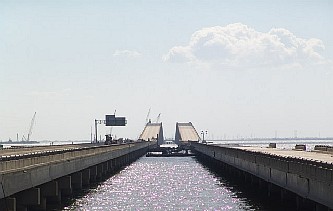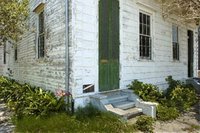You Bet Your Ass(ets)
 Builders and homeowners are looking at making their new homes hurricane proof.
Builders and homeowners are looking at making their new homes hurricane proof.
Until now, few buyers have been interested in superstrong houses. Those houses have usually cost far more and often looked more like ugly ducklings than cozy havens. Nor did officials along the Southern coasts generally require builders to fortify their construction. Florida began toughening building codes after the devastation of Hurricane Andrew in 1992, but it has been the exception. Until recently, building requirements were minimal in Mississippi and Louisiana.
But many of the new homes are proving more appealing. Demand has jumped sharply, and insurance companies are even offering policies at a discount in coastal areas where they are otherwise cutting back on coverage.
"People have seen what has happened in Florida, Louisiana and Mississippi and they know that what has happened can happen again," said Gopal Ahluwalia, the vice president for research for the National Association of Home Builders.
The new homes are several notches stronger than even the toughest building codes require. And many are being offered at surprisingly low prices. While the villas going up in the Florida Panhandle are selling for up to $5 million, Kristin Beall is offering her three-bedroom, 1,300-square-foot homes near Orlando for as little as $200,000. In Texas, Mr. Hayes is selling some of his stilt houses for $199,000, but his tiny studio model goes for as little as $99,000. He plans to build 140 of those houses and is clearing ground for 300 more equally strong houses that will start at $300,000.
It's all well and good that people want to exceed the building codes. But if they're expecting their new fortress to withstand the storm surge, I hope they are not betting their lives on it.
Architects and engineers can design structures to withstand 200 mph winds but not a 20 foot wall of water. The only reasonable reason to construct such homes is to protect the property against wind and rain damage. However, the cost of building such a dwelling has to be weighed against the value of what you're trying to protect.
Does it make since to build a two-million dollar house if the contents are worth only $150,000. It would be a better value to spend far less in order to reduce your insurance premiums yet make sure your covered adequately.Material effects can be replaced, loved ones cannot. When the big one comes, bring the family and wedding photos, leave the stereo.





